Choosing the Best Watermaker for Your Boat, Part 1

An anchorage miles from nowhere has a lot to recommend it for a long stay—unless you run out of fresh water.
A watermaker or desalinator takes away the worry.
It also allows your crew to enjoy longer (but not long!) showers, rinse down on the swim platform after a swim and keep the boat rinsed free of salt after offshore passages.
And you don’t have to carry the weight of a huge load of fresh water in a large tank for longer passages—with a dependable water-maker, you just make more as needed.
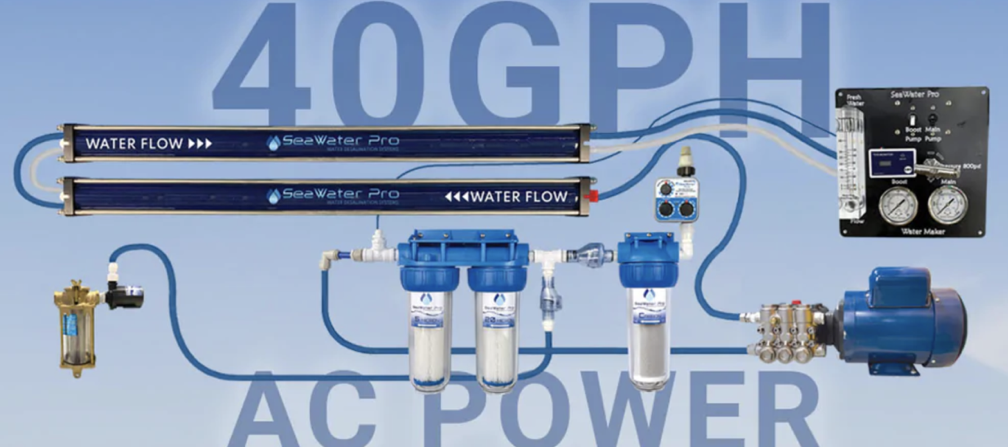
You also don’t have to take on local water in ports where the water supply may not agree with your digestive tract.
And you don’t have to lug heavy jugs full of water in the dinghy from shore to your mooring or anchorage.
How Water-Makers Work
In simple terms, a desalination system draws seawater in via a pump, filters out sediment and particulates in one or sometimes two pre-filters, then puts the clean seawater under high pressure to pass through a reverse osmosis (RO) membrane. The RO membrane is a “semi-permeable polyamide thin-film composite”—a really, really fine filter.
The membranes allow the smaller H20 molecules to pass through, leaving salt and other impurities behind.
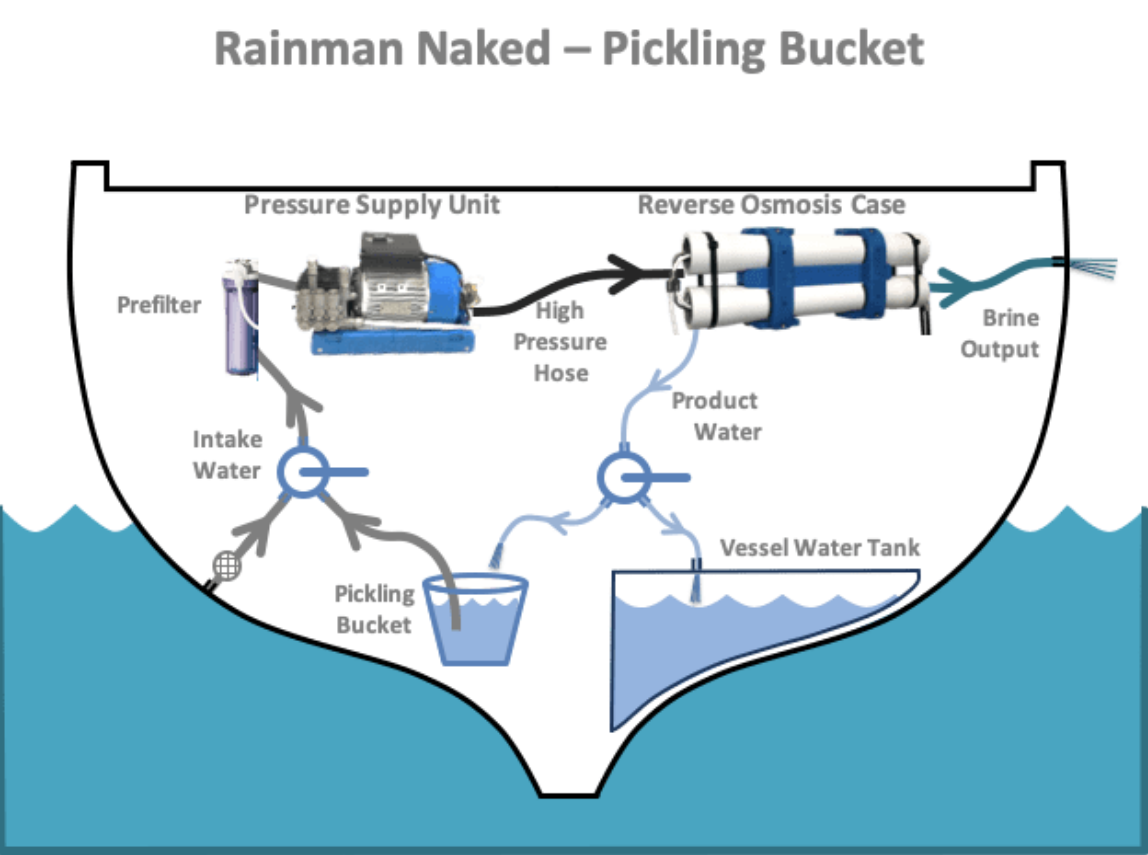
The majority of the water and all of the salt continues in the flow and out the brine waste water hose, back over the side. The salt does not accumulate on the membrane, which is why RO membranes do not need to be cleaned or replaced regularly.
Bacteria and viruses are much larger than salt molecules, so they stay in the main seawater stream and are passed out with the brine waste water.
The clean fresh water goes into your tank. Presto, you’ve got fresh water for everything from brushing your teeth to washing the dog.

Powering Water-Makers
Water-makers can be powered by AC or DC current, by small gasoline engines or by coupling them to your main engine.
Smaller electrically-powered pumps have the advantage of low noise levels and the ability to cycle on without starting up any other machinery aboard. They’re also available in separate component parts, which allows fitting them into available space below decks. (Larger models do require running the generator, at least long enough to fill the water tanks.)
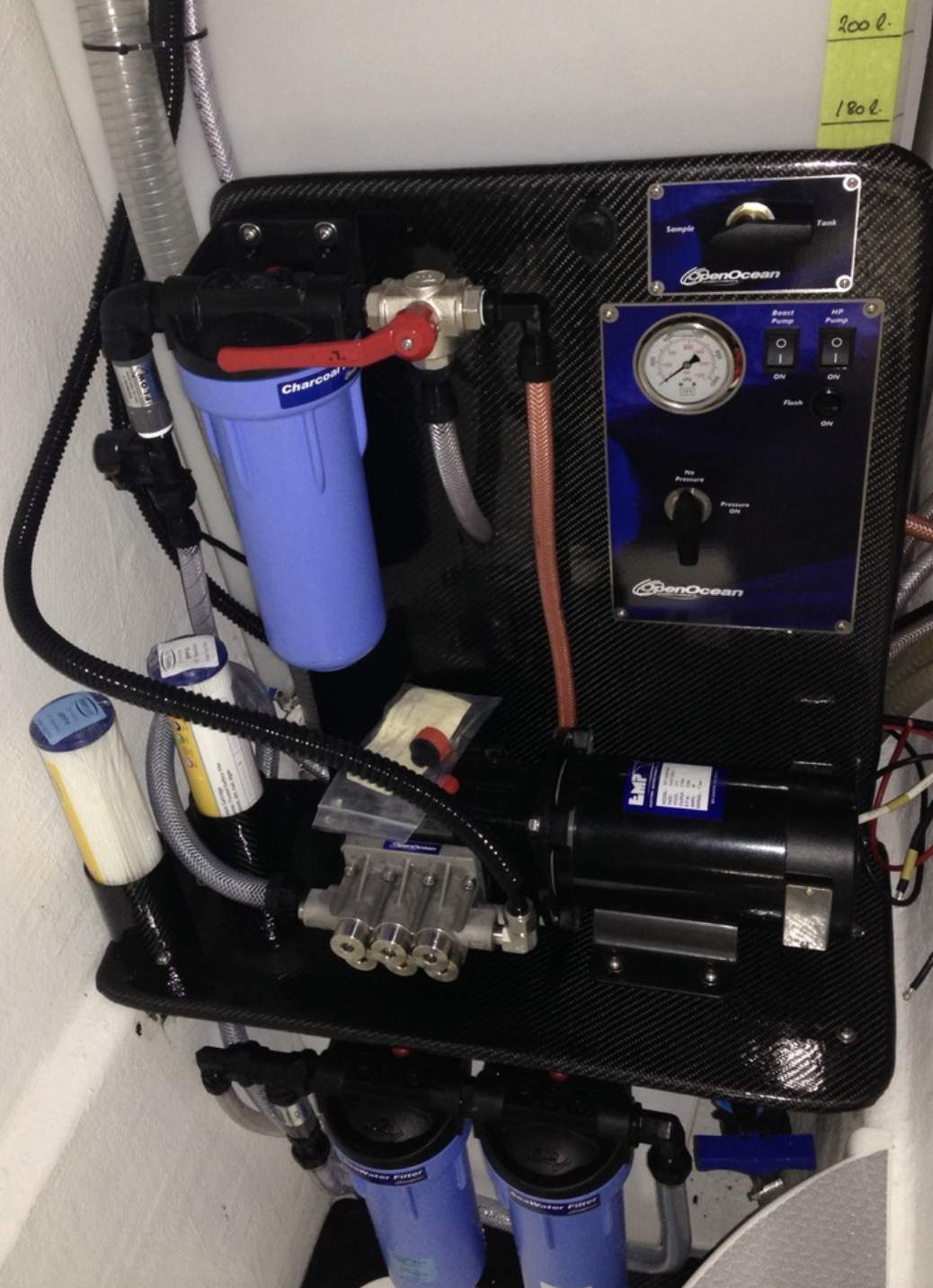
Some pumps have a low enough draw to be powered by a solar array, or by a battery kept charged by solar or wind generators.

There are also portable water-makers that come packaged with small gasoline engines to power the pump. These have strong output, but add the usual concerns of explosive fuels aboard as well as the potential for CO poisoning if the unit is put in the wrong place.
In installations where a lot of fresh water is needed daily, an engine driven water-maker will have greater output potential.

Engine driven models require a bracket to mount the high pressure pump to your engine and a drive belt to make it rotate.
While they require the main engine to operate to function, they’re capable of producing huge amounts of water in a short time. Electrically-powered desalinators produce smaller amounts of water in a given period.

An Expensive Option
While desalinators are somewhat expensive to buy and troublesome to maintain, they can be a great comfort on long voyages to remote locations.
But they can take a chunk out of your cruising budget.
Desal systems suitable for recreational cruising range from $3,500 to $11,000, with the price difference based mostly on the production. A few portable systems are priced as low as $1,200, but their output won’t do the job for more than basic needs for a couple aboard. We’ll look at some of those available in Part 2.
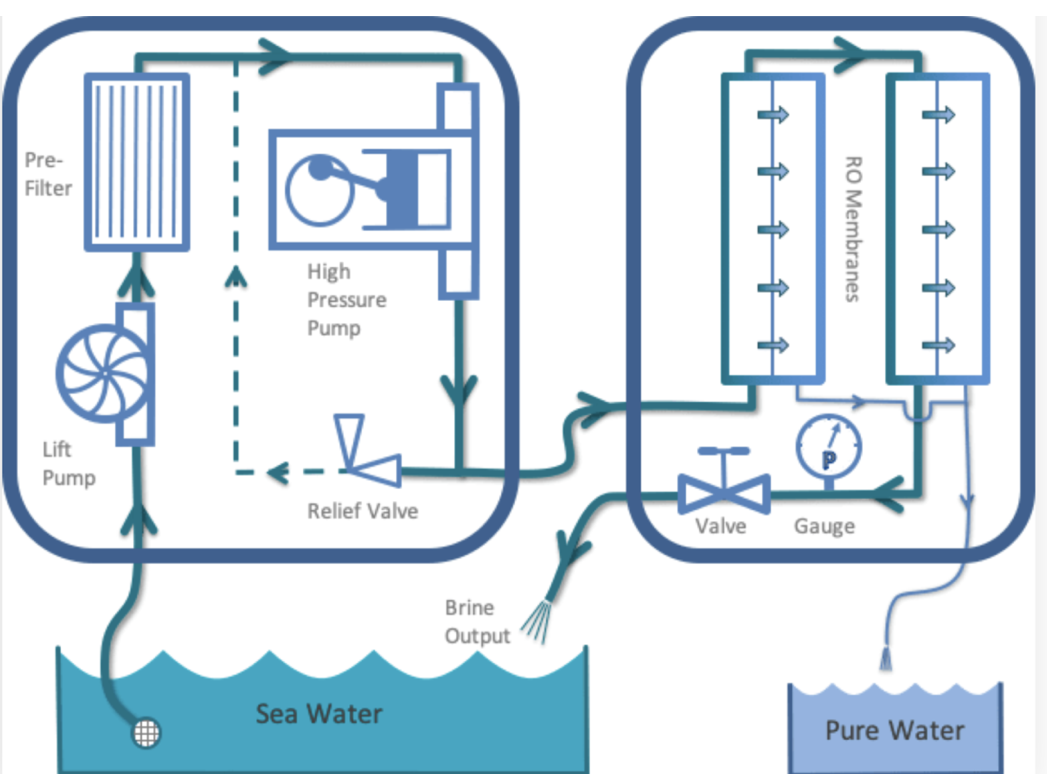
Garbage In, Garbage Out
It’s necessary to start with clean seawater to give your desal system a fighting chance of working as intended. You can’t crank it up in a harbor loaded with offal and expect it to filter out the garbage because the filters will quickly load up and put you out of business.
The cleaner the water you start with, the better the system can function and the longer between required flushes - though it’s still a good idea to clean it every other day or even after every cycle
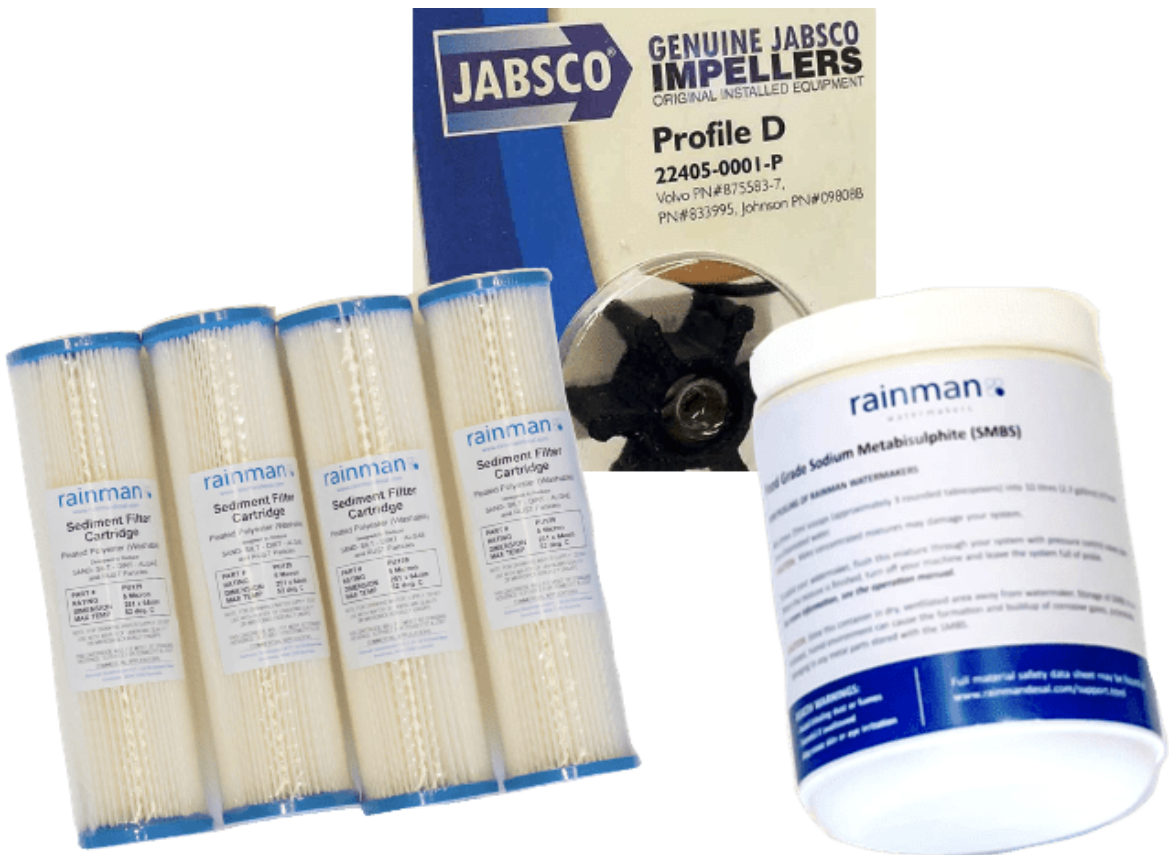
You’ll also need what the manufacturers call “consumables”, which are the pre-filters that must regularly be replaced as they accumulate dirt and debris. You also need the “pickling” chemicals-- food grade sodium metabisulphite--which extend the life of the filters.
Occasionally it will be necessary to replace the impeller in the pump, so carrying a spare on long trips or in remote locations makes sense.
In Part 2, we’ll look at watermakers from some of the best-known manufacturers both in the U.S. and elsewhere.